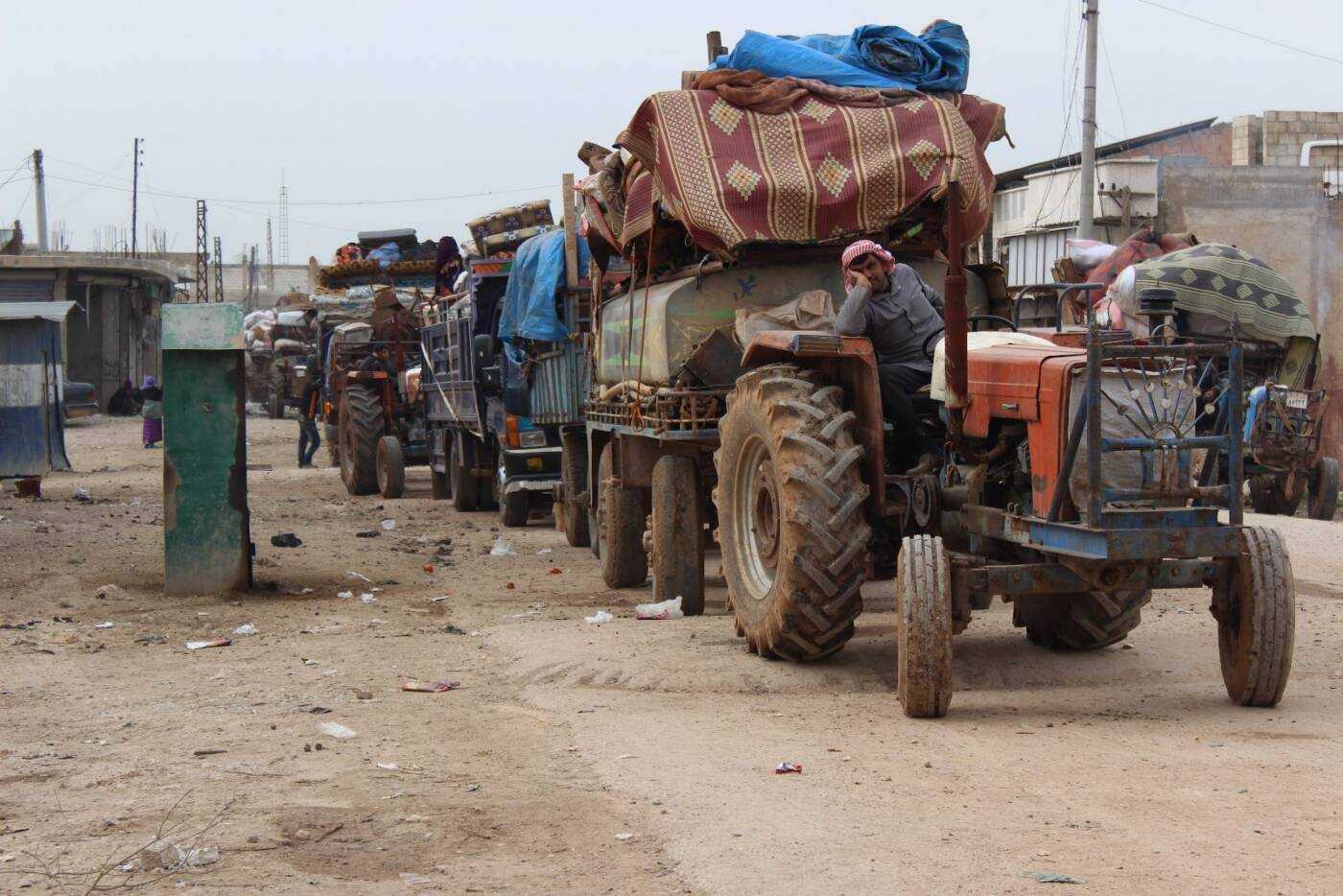‘Hundreds’ of families return to government-held eastern Idlib through newly established crossing
AMMAN: Mohammad al-Ammar returned to his home in the eastern […]
7 March 2018
AMMAN: Mohammad al-Ammar returned to his home in the eastern Idlib countryside this week to find it dark and empty. He paced through his house for the first time in two months, using his phone as a flashlight to survey the damage.
One room of al-Ammar’s house had been destroyed by bombardment. Though the rest of the house remained intact, “it was completely ransacked,” he told Syria Direct on Monday.
The 45-year-old left his home in the east Idlib city of Abu a-Dhuhur this past January along with his wife and five children to escape pro-government bombings and an approaching Syrian Arab Army (SAA) ground offensive against rebel forces.
This week, al-Ammar was among thousands of displaced residents who reportedly returned to their homes in government-held eastern Idlib after a crossing leading out of rebel territory opened on Sunday.
The crossing, local sources told Syria Direct, begins in the opposition-held town of Tal Tuqan, the site of a Turkish Armed Forces (TSK) ceasefire observation point. The TSK currently mans six observation posts across Idlib and western Aleppo province in accordance with a de-escalation agreement brokered with Russia and Iran in May.

Fighters with the rebel faction Failaq a-Sham “supervise the crossing” at Tal Tuqan, Khaled al-Khalef, a citizen journalist and resident of rebel-held east Idlib, told Syria Direct from just outside the crossing this week.
Al-Khalef said that he saw approximately 1,500 people pass through the crossing on a single day this week. Syria Direct could not independently verify his account.
Displaced residents who enter through the rebel checkpoint at Tal Tuqan must then travel five kilometers southeast to the town of Tal Sultan, where TSK soldiers man a second checkpoint just west of the rebel-government frontline, Khaled added.
“The trip was long,” said returnee Mohammad al-Ammar, and included “hours of waiting for security inspections.”
Once in government-held territory, the Abu a-Dhuhur resident said he passed through a checkpoint overseen by Russian and SAA soldiers, he says, who examined all vehicles and identification documents.
The pro-opposition Sham Network reported on Tuesday that “several young men” were arrested by government forces while attempting to cross into government territory, citing testimonies by local residents in the eastern Idlib. Syria Direct could not independently confirm the account.
“Personally, I did not see any returnees arrested,” returnee al-Ammar said, adding that he did witness two older residents temporarily held for questioning and subsequently released.
“I decided to return with my wife, but my sons remained [in opposition-held territory],” Shaheen Abu Maray, who is returning to the east Idlib town of Tal a-Daman, told Syria Direct while waiting at the crossing on Wednesday. “If there aren’t any arrests for mandatory military service, I will tell them to return.”

It is not immediately clear how many residents have returned to government-held areas of eastern Idlib province since the crossing opened on Sunday.
Citizen journalist al-Khalef, who traveled to the site of the crossing several times this week, estimates that that roughly 800 families have returned so far.
He described a stream of families with “cars, tractors, livestock and other vehicles” waiting to enter through the rebel-held checkpoint. Pictures sent to Syria Direct from the crossing show similar scenes.
Syria Direct sent several requests since Monday to the media office of Failaq a-Sham for comment on the opening of the crossing and the number of returnees, but did not receive a reply by the time of publication.
Syrian state media said “dozens of families from the Idlib and Aleppo countrysides” returned to their homes, which “the Syrian Arab Army cleared of terrorists,” on Sunday, the day the crossing opened.
Russian and Turkish state media have not reported the opening of the crossing.

An estimated 270,000 residents fled eastern Idlib and northeastern Hama in December 2017 and January 2018 during a Russian-backed SAA offensive that began in December 2017, said UN Special Advisor to the UN Special Envoy for Syria Jan Egeland in a February 1 statement.
Displaced families from Idlib’s eastern countryside town who could not afford afford to rent other homes sought refuge in the province’s north, many in informal camps along the Syrian-Turkish border.
Abu a-Dhuhur resident al-Ammar spent the past two months with his family in a tent pitched next to the road connecting Idlib city with the Turkish border. When he heard about the crossing earlier this week, he packed up and headed home with his family.
“I am nervous about my decision to return,” he said, but poor living conditions in Idlib, a lack of assistance for displaced residents and widespread inter-rebel clashes all pushed him to return to government-held territory, he says.
“I lived under the regime and in the opposition territories, and the situation didn’t really change,” says al-Ammar. “Honestly, we didn’t feel free. The only thing that changed was who was ruling over us.”
“Now, I just want to fix up my home, live my life and die there.”
With additional reporting by Elissar Nader, Lina al-Abed, Ismail al-Jamous and Tarek Zaid al-Hariri.







